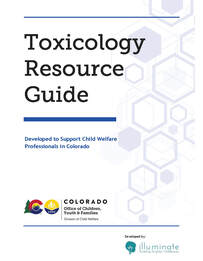Examples
crack, speed ball (cocaine + heroin), rock candy
Routes of Use
ingestion, intranasal, injection, inhalation
Observed Symptoms
Adult: Similar to amphetamines/stimulants, in addition to myocardial infarction (heart attack), stroke
Prenatal Exposure
Risks of prenatal exposure include: preterm labor, intrauterine growth restriction, small for gestational age, low birth weight, miscarriage, behavioral lability and irregularities in heart rate and blood pressure, abnormal alertness, tone, and motor development.
Breastfeeding
Cocaine can be found in high levels in the breastmilk after maternal use and breastfeeding is not recommended.
crack, speed ball (cocaine + heroin), rock candy
Routes of Use
ingestion, intranasal, injection, inhalation
Observed Symptoms
Adult: Similar to amphetamines/stimulants, in addition to myocardial infarction (heart attack), stroke
- Withdrawal: similar to amphetamine and “wash-out” with symptoms of fatigue, lethargy, hyperinsomnia, and mood disturbance and dysphoria. May mimic severe depression.
- Child: same
Prenatal Exposure
Risks of prenatal exposure include: preterm labor, intrauterine growth restriction, small for gestational age, low birth weight, miscarriage, behavioral lability and irregularities in heart rate and blood pressure, abnormal alertness, tone, and motor development.
Breastfeeding
Cocaine can be found in high levels in the breastmilk after maternal use and breastfeeding is not recommended.

Withdrawal from cocaine can lead to mood disturbance in adults. Infants also withdrawing after birth have high pitched cries that can be especially difficult for caregivers, particularly those withdrawing as well. This combination of factors could lead to frustration in caregiving and may increase danger for babies and toddlers who, by nature, need attentive care and supervision.
The risk of shaken baby syndrome/abusive head trauma, feeding injuries from bottle jamming, or potty training injuries is high. If safety planning with parents around substance use, consider these risks and be thoughtful around planning an alternate caregiver for the children during and after use, including periods of potential withdrawal. This is where engaging the family around what their use looks like - including what their triggers for use are, how long the high lasts, and then how long the coming down period affects them - is imperative for safe planning care for children.
Urine
Screens and confirmatory tests for cocaine metabolite benzoylecgonine, can be positive for 3-5 days after last use.
Blood
Both parent compound and metabolite can be tested, however it is atypical as parent compound is rapidly metabolized. Clinical examination and observation in conjunction with history and/or urine is typically reliable.
Meconium
Assays for cocaine and metabolites can be tested to evaluate for maternal use.
Umbilical Cord
Assays for cocaine and metabolites can be tested to evaluate for maternal use.
Hair
Assays for cocaine and metabolites can be tested to evaluate for exposure.
Screens and confirmatory tests for cocaine metabolite benzoylecgonine, can be positive for 3-5 days after last use.
Blood
Both parent compound and metabolite can be tested, however it is atypical as parent compound is rapidly metabolized. Clinical examination and observation in conjunction with history and/or urine is typically reliable.
Meconium
Assays for cocaine and metabolites can be tested to evaluate for maternal use.
Umbilical Cord
Assays for cocaine and metabolites can be tested to evaluate for maternal use.
Hair
Assays for cocaine and metabolites can be tested to evaluate for exposure.

